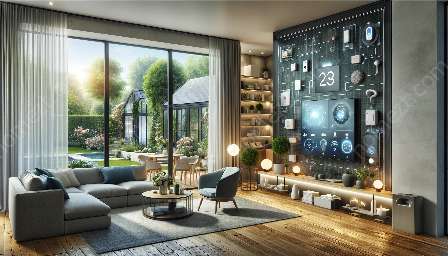The rise of affordable smart home technology has revolutionized the way we live, bringing convenience, security, and energy efficiency to households around the world. This revolution is closely linked to smart home trends, as well as intelligent home design, shaping the future of modern living.
Smart Home Trends
Smart home technology has become more accessible to the average consumer, leading to a surge in smart home adoption and innovation. One of the key trends is the integration of voice control and AI assistants, such as Amazon Alexa and Google Assistant, into various home devices. This allows homeowners to control their smart appliances, lighting, and security systems with simple voice commands, enhancing convenience and accessibility.
Another trend is the expansion of smart home ecosystems, where different devices and systems can seamlessly communicate and work together. This interoperability fosters a cohesive and integrated smart home experience, where devices like smart thermostats, door locks, and surveillance cameras can be interconnected to create a comprehensive home automation network.
Energy efficiency is also driving smart home trends, with the emergence of smart appliances and connected devices that reduce energy consumption and promote sustainable living. From smart HVAC systems that optimize heating and cooling based on occupancy and weather conditions to energy-monitoring smart plugs and devices, homeowners can significantly reduce their environmental impact and energy costs.
Intelligent Home Design
Intelligent home design goes hand in hand with the rise of affordable smart home technology, as architects, designers, and homeowners strive to seamlessly integrate smart features into modern living spaces. This approach involves the thoughtful incorporation of smart devices and systems into the architecture and interior design of homes, creating a harmonious and functional environment.
One aspect of intelligent home design is the blending of smart technology with aesthetics, where smart devices are seamlessly integrated into the home's interior and exterior design, without compromising the overall look and feel of the space. For example, smart lighting fixtures, motorized window treatments, and hidden smart home hubs allow for unobtrusive integration of technology within the home.
The concept of intelligent home design also extends to the use of sustainable and eco-friendly materials, as well as the implementation of passive design principles to enhance energy efficiency and thermal comfort within the home. By combining smart technology with sustainable design practices, homeowners can create living spaces that are not only technologically advanced but also environmentally conscious.


